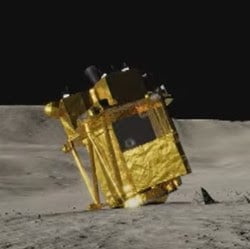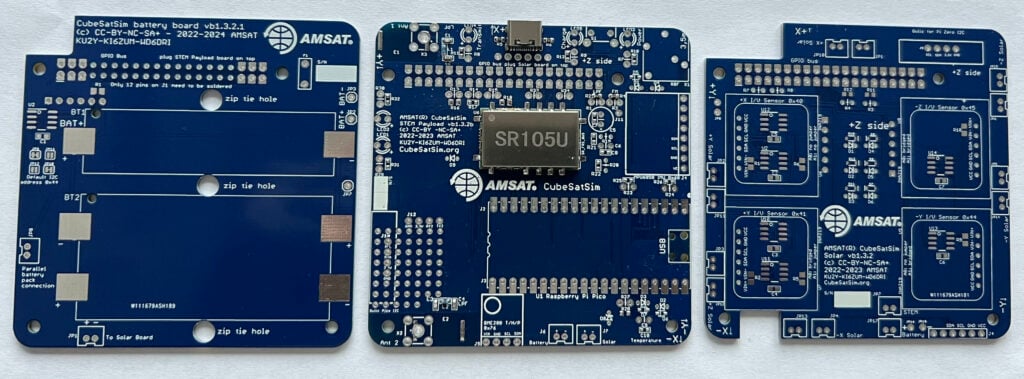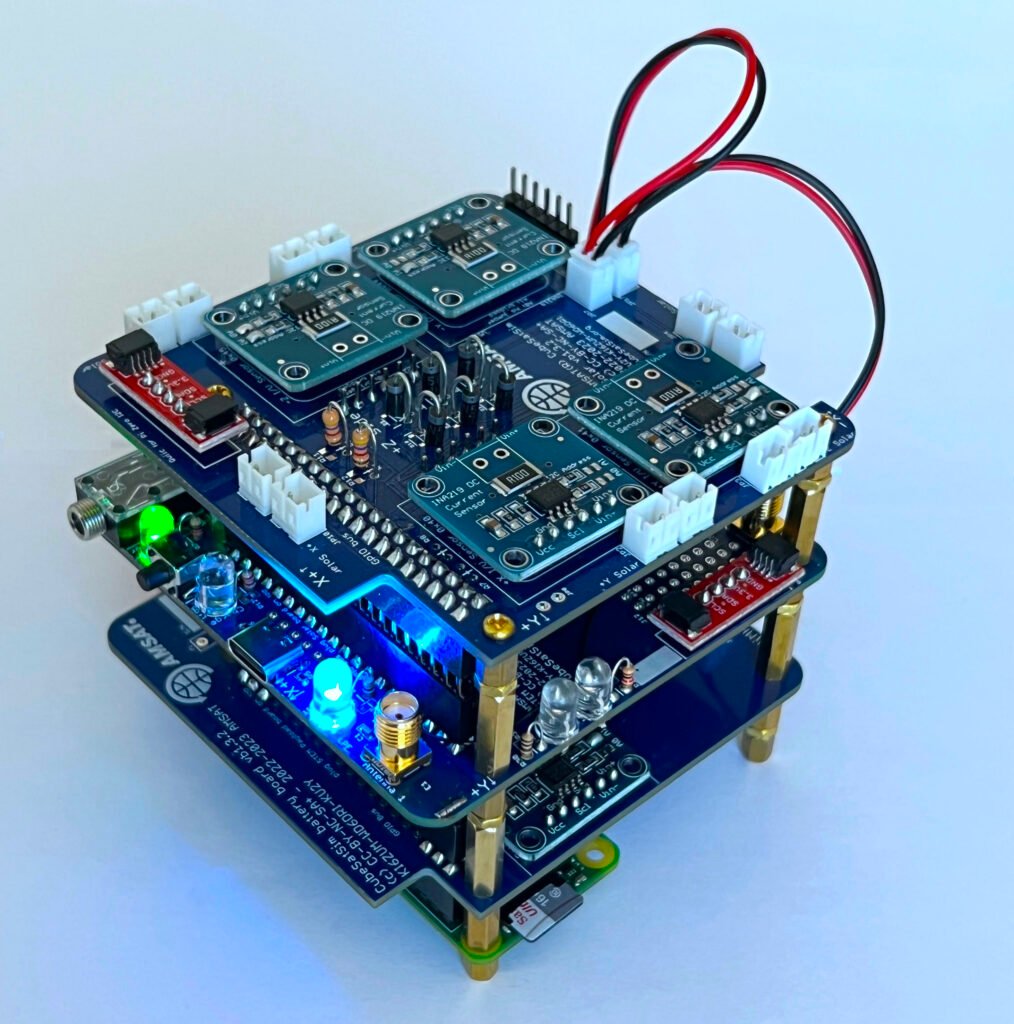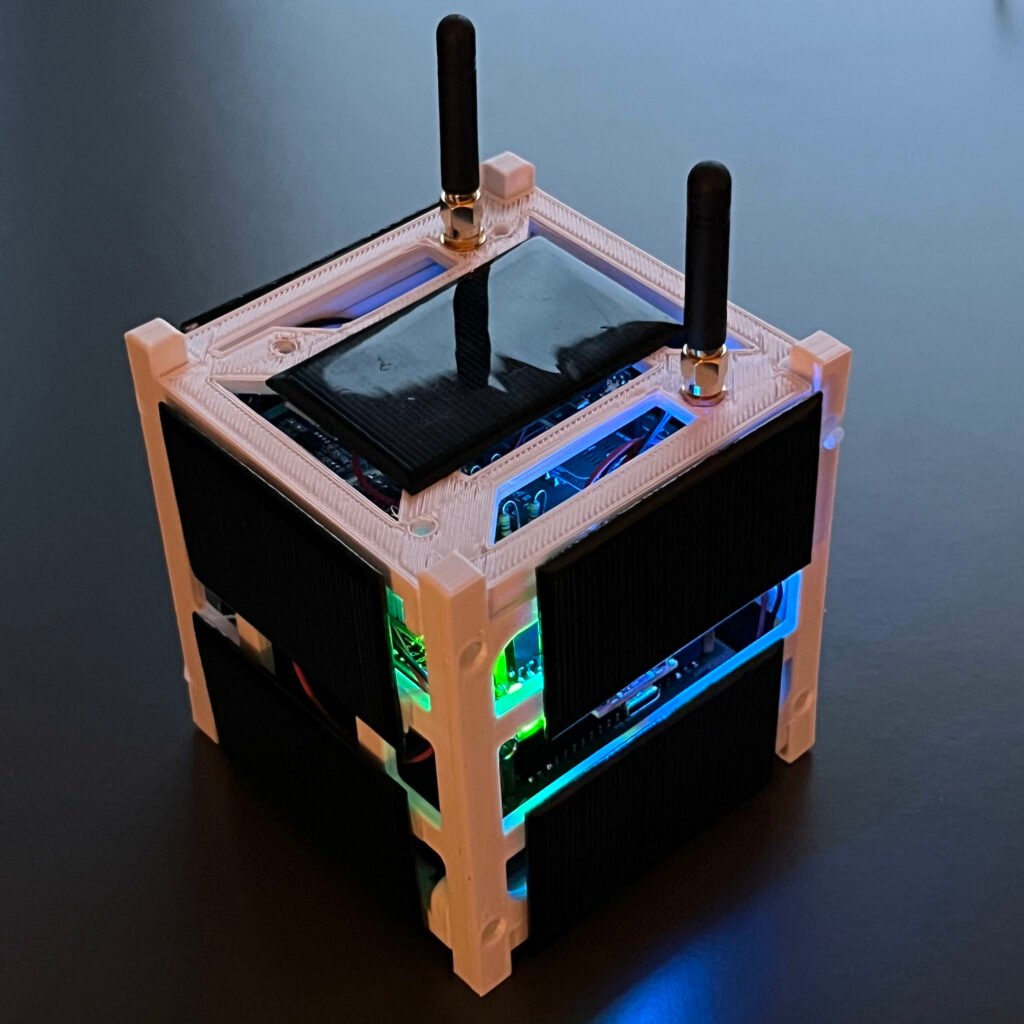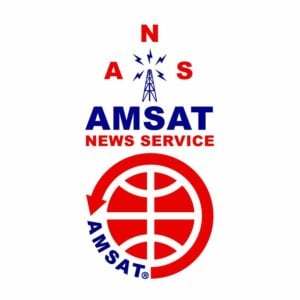
AMSAT News Service
ANS-091
March 31, 2024
In this edition:
- AMSAT-DL Proposes Next Generation GEO/MEO Amateur Radio Payload
- AMSAT-DL’s ERMINAZ Satellites Complete IARU Frequency Coordination
- LoRa Digipeater Satellite from the U. S. Naval Academy Scheduled for 2025 Launch
- Changes to AMSAT-NA TLE Distribution for March 29, 2024
- ARISS News
- Upcoming Satellite Operations
- Hamfests, Conventions, Maker Faires, and Other Events
- Satellite Shorts From All Over
The AMSAT News Service bulletins are a free, weekly news and information service of AMSAT, The Radio Amateur Satellite Corporation. ANS publishes news related to Amateur Radio in Space including reports on the activities of a worldwide group of Amateur Radio operators who share an active interest in designing, building, launching and communicating through analog and digital Amateur Radio satellites.
The news feed on https://www.amsat.org publishes news of Amateur Radio in Space as soon as our volunteers can post it.
Please send any amateur satellite news or reports to: ans-editor [at] amsat.org
You can sign up for free e-mail delivery of the AMSAT News Service Bulletins via the ANS List; to join this list see: https://mailman.amsat.org/postorius/lists/ans.amsat.org/
AMSAT-DL Proposes Next Generation GEO/MEO Amateur Radio Payload
At the request of the IARU, the European Space Agency (ESA) is supporting an initiative to define a future amateur radio satellite payload in geostationary orbit. The implementation is to take place through collaborative cooperation between internal, industrial and amateur radio participants. This activity will consolidate the requirements of the amateur and commercial satellite industry, weigh up different payload options, address the future user segment, develop scenarios for the financing, procurement and operation of such a payload, and investigate possibilities for placement on geostationary platforms.
This past weekend, AMSAT-DL released their proposal. AMSAT-UK, along with the British Amateur Television Club, AMSAT-NA, and the UK Microwave Group previously made a separate proposal. AMSAT-DL’s proposal is written by the authors Kai Siebels, DH0SK and Matthias Bopp, DD1US. The proposal takes into account the technical requirements and needs of radio amateurs. Various aspects such as orbit, satellite and platform as well as payload are taken into account.
Among the possible orbits such as MEO, HEO and GEO, the GEO orbit has proven to be the most suitable due to the extensive experience with OSCAR-100. A good compromise for the orbit position would be at ~43 degrees West to also support Eastern European countries and most of North America.
A payload for amateur radio should allow the greatest possible scope for experiments on different bands. Six bands could be used for the uplink to enable experiments with different frequencies. The main uplink band is the 13 cm band, the main downlink band is the 3 cm band. All proposed band / NB transponder combinations can be implemented at the ground station with very reasonable effort.
A dedicated AMSAT (Amateur Radio) mission based on an ESA-supported Micro GEO provides opportunities for several additional experiments that support AMSAT’s education, science and development goals to inspire young people with amateur radio technology. Finally, such a mission could also provide an excellent platform for disaster/emergency communications directly via the GEO satellite transponders.
Micro GEO and QO-100
Micro GEO satellites are a new class of small geostationary communications satellites. They are around a tenth of the size of traditional geostationary satellites and typically measure just one cubic meter. This smaller size makes them significantly cheaper to manufacture and launch, allowing satellite operators to offer customized regional services or gap fillers that would not be financially feasible with large satellites.
The amateur radio payload “QO-100” on the Es’hail-2 geostationary satellite, is a groundbreaking platform for the amateur radio community as it represents the first geostationary payload for amateur radio. The exemplary collaboration between AMSAT-DL, QARS and commercial partners on this project to integrate amateur radio payloads into a commercial satellite is a sign of the ongoing cooperation between the amateur radio community and the commercial space industry. This synergy can open up new avenues for amateur radio projects in space. QO-100 serves as a bridge between traditional approaches and new possibilities, while remaining firmly rooted in the principles of amateur radio. Its presence in geostationary orbit is a triumph for the amateur radio community and a sign that amateur radio can continue to play an important role in the exploration and use of space.
SYNCART 2.0 on the Heinrich Hertz satellite
The Heinrich Hertz Satellite Mission (also known as H2Sat) is a national, geostationary communications and research satellite. It was planned by the Space Agency of the German Aerospace Center (DLR) on behalf of the BMWi as part of the German government’s space strategy and serves both independent payloads (“hosted payloads”) and the in-orbit verification (IOV) of technologies as well as for research purposes.
In July 2012, AMSAT-Germany (AMSAT-DL) proposed an amateur radio payload on the Heinrich Hertz satellite with the name “SYNCART 2.0”. This was a further development of the transponders of the P3-D AMSAT-OSCAR-40 satellite in the X and K amateur radio bands and a beacon in the 76 GHz band.
The objectives of the amateur radio payload were as follows:
- Development of the geostationary orbit for the amateur radio service
- Communication resource for emergency and disaster radio (with low-power, small, simple technology)
- In-orbit verification of SDX technologies
- Promoting the spread of microwave technology
- Gaining new insights by studying propagation conditions in the 76 GHz band for satellite applications
- Provision of a signal for the calibration of antennas, converters and receivers, in particular for radio astronomical applications
- Stimulating the acquisition of scientific and technical education, especially among schoolchildren and young people, by providing a permanently available satellite resource, e.g. for use in teaching, research and education
- Acquisition of concrete knowledge and experience with satellite technologies and corresponding research opportunities in order to provide the space industry with highly qualified specialists.
The concept aimed to make efficient and effective use of any remaining H2Sat capacity.
The Heinrich Hertz feasibility study was completed in 2010. Planning phase B was carried out from 2011 to 2013. In July 2012, AMSAT-DL submitted its proposal for an amateur radio payload. Unfortunately, important positions on the antenna deck and with the payloads were already occupied at this point. There was also an approach for a Ka/Ka relaying transponder, but its use would have been limited to two small spot beams to northern Germany and southern Germany. At the time, this did not seem justifiable to our members and the amateur radio community in terms of the cost/benefit ratio. After it became clear that an amateur radio payload on the Heinrich Hertz satellite in the proposed form was not feasible, the proposal was finally withdrawn in September 2012.
Miraculously, however, a new window opened just a few months later! Initial talks and contacts were held as early as December 2012, which ultimately led to an amateur radio payload on the Es’hail-2 satellite, also known as Qatar-OSCAR 100 or QO-100. Es’hail-2/QO-100 was launched aboard a SpaceX Falcon 9 rocket on November 15, 2018. This project is a joint initiative of the Qatar Satellite Company, the Qatar Amateur Radio Society and AMSAT-DL. The satellite was built by Mitsubishi Electric Corporation in Japan and is located in a geostationary orbit at 26° East.
Links
- Proposal for a Geostationary Microwave Amateur Radio Payload [AMSAT-DL, DH0SK, DD1US, Mar2024]
- Definition of a future amateur satellite GEO/MEO payload [Frank Zeppenfeldt (PD0AP), ESA, FOSDEM Feb2024]
- Support For GEO Payload AMSAT DL Introduction V1 [Frank Zeppenfeldt (PD0AP), ESA, AMSAT-DL Symposium 2023]
- Proposal for a Geostationary Microwave Amateur Radio Payload [AMSAT-UK, BATC]
- SYNCART 2.0 project proposal on the Heinrich Hertz satellite [AMSAT-DL, 2012]
[ANS thanks AMSAT-DL for the above information]
AMSAT-DL’s ERMINAZ Satellites Complete IARU Frequency Coordination
AMSAT-DL’S ERMINAZ satellites have completed frequency coordination with the IARU.
The ERMINAZ mission is a syndicated multi-PocketQube mission with a total of 7 PQs under the leadership of AMSAT-Germany, which also holds the launch contract with RFA under DLR support. The project is in collaboration between AMSAT-DL, AMSAT-EA (Spain), ESERO-Germany (Bochum Observatory) and Libre Space Foundation (Greece). The mission is to promote, advance and develop knowledge about space and amateur radio. ERMINAZ-1U & ERMINAZ-1V will transmit telemetry, images, provide a digipeat/store/forward functionally to all radio amateurs worldwide. ERMINAZ-1U will operate in the UHF amateur satellite band, while ERMINAZ-1V will operate in the VHF amateur satellite band. Only non-proprietary, open source and documented protocols, accessible to radio amateurs, will be used. This includes CCSDS telemetry, CW beacon, SSDV images, digipeater, AX.25 und possibly other modes. Telemetry and sensor data from radiation sensor and triaxial accelerometer / gyroscope / magnetometer will allow any radio amateur to participate by extending his knowledge about space. In addition, a digipeater and store & forward function will allow licensed radio amateurs to use ERMINAZ-1U/1V as a relay to communicate with other radio amateurs worldwide. The mission will conduct several experiments with different types of modulations, bandwidths, data rates and framing schemes: GFSK with data rate from 9600 up to 19200 GFSK with data rate from 9600 up to 19200 bits/s GMSK with data rate from 9600 up to 19200 bits/s BPSK with data rate from 9600 up to 19200 bits/s QPSK data rate from 19200 up to 38400 bits/s Frames will using three different framing schemes configurable upon the mission requirements: CSDS (residual or suppressed carrier) or IEEE 802.15.4 (preamble, sync) or AX.25. Planning a launch by RFA-Rocket Factory Augsburg AG from SaxaVord Spaceport into a 500km polar orbit not earlier than August 2024 together with UNNE-1 (HADES-E) and MARIA-G (HADES-F) from AMSAT-EA and QUBIK 5 from LibreSpace.
Up and downlinks on 145.965 MHz (ERMINAZ-1V) and 435.775 MHz (ERMINAZ-1U) have been coordinated.
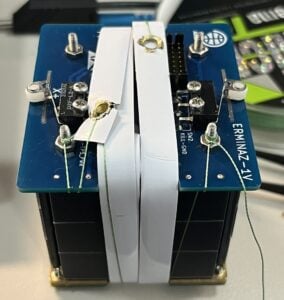
[ANS thanks AMSAT-DL and the IARU for the above information]
LoRa Digipeater Satellite from the U. S. Naval Academy Scheduled for 2025 Launch
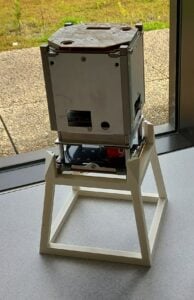
[ANS thanks the U.S Naval Academy and the IARU for the above information]
The 2024 Coins Are Here Now!
Help Support GOLF and Fox Plus.
Join the AMSAT President’s Club today!
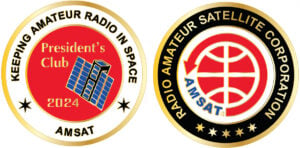
Changes to AMSAT-NA TLE Distribution for March 29, 2024
Two Line Elements or TLEs, often referred to as Keplerian elements or keps in the amateur community, are the inputs to the SGP4 standard mathematical model of spacecraft orbits used by most amateur tracking programs. Weekly updates are completely adequate for most amateur satellites. TLE bulletin files are updated Thursday evenings around 2300 UTC, or more frequently if new high interest satellites are launched. More information may be found at https://www.amsat.org/keplerian-elements-resources/
The following satellite has been removed from this week’s AMSAT-NA TLE distribution:
XW-2E NORAD Cat ID 40909 Decayed from orbit on or about 28 March 2024
[ANS thanks Joe Fitzgerald, KM1P, AMSAT Orbital Elements Manager, for the above information]
Need new satellite antennas?
Purchase an M2 LEO-Pack from the AMSAT Store!
When you purchase through AMSAT, a portion of the proceeds goes towards Keeping Amateur Radio in Space.
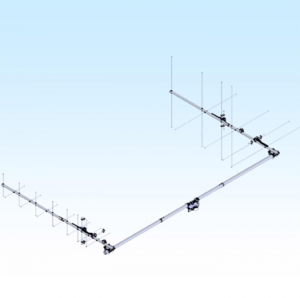
ARISS News
Amateurs and others around the world may listen in on contacts between amateurs operating in schools and allowing students to interact with astronauts and cosmonauts aboard the International Space Station. The downlink frequency on which to listen is 145.800 MHz worldwide.
Embry-Riddle Aeronautical University, Daytona Beach, FL, direct via NN4ER
The ISS callsign is presently scheduled to be NA1SS
The scheduled crewmember is Loral O’Hara KI5TOM, Matthew Dominick KCØTOR, Jeanette Epps KF5QNU, or Mike Barratt KD5MIJ
The ARISS mentor is AJ9N
Contact is go for: Wed 2024-04-03 15:22:17 UTC 34 deg
Collège Théodore Monod, Gagny, France, direct via TM2ISS
The ISS callsign is presently scheduled to be OR4ISS
The scheduled crewmember is Loral O’Hara KI5TOM, Jeanette Epps KF5QNU, Matthew Dominick KCØTOR, or Mike Barratt KD5MIJ
The ARISS mentor is F6ICS
Contact is go for: Thu 2024-04-04 14:51:07 UTC 55 deg
Volga State University, Russia, direct via TBD
The ISS callsign is presently scheduled to be RSØISS
The scheduled crewmember is Aleksandr Grebyonkin RZ3DSE
The ARISS mentor is RV3DR
Contact is go for Sun 2024-04-07 09:20 UTC
As always, if there is an EVA, a docking, or an undocking; the ARISS radios are turned off as part of the safety protocol.
The crossband repeater continues to be active (145.990 MHz up {PL 67} & 437.800 MHz down), If any crewmember is so inclined, all they have to do is pick up the microphone, raise the volume up, and talk on the crossband repeater. So give a listen, you just never know.
Note, all times are approximate. It is recommended that you do your own orbital prediction or start listening about 10 minutes before the listed time.
The latest information on the operation mode can be found at https://www.ariss.org/current-status-of-iss-stations.html
The latest list of frequencies in use can be found at https://www.ariss.org/contact-the-iss.html
[ANS thanks Charlie Sufana, AJ9N, one of the ARISS operation team mentors for the above information]
Upcoming Satellite Operations
Quick Hits:
Jay Stephenson, WA1JAY, pays a visit to Paradise Isl. from March 15 to April 2. QRV as C6A/WA1JAY on HF (SSB, FT4/8) and via FM satellites. QSL via ClubLog OQRS, LoTW.
Major Roves:
NOIRMOUTIER ISLAND SAT DXPEDITION 2024
First bits from TM4J…!
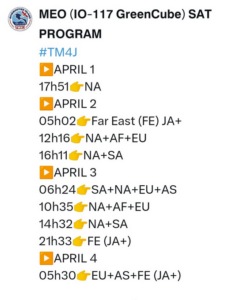
Additionally, F4DXV will be QRV for RS-44 at 1227z on 1st April, listening for NA, Caribbean, and SA. No QRG info at the moment.
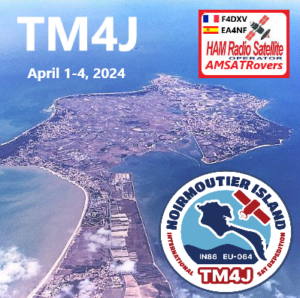
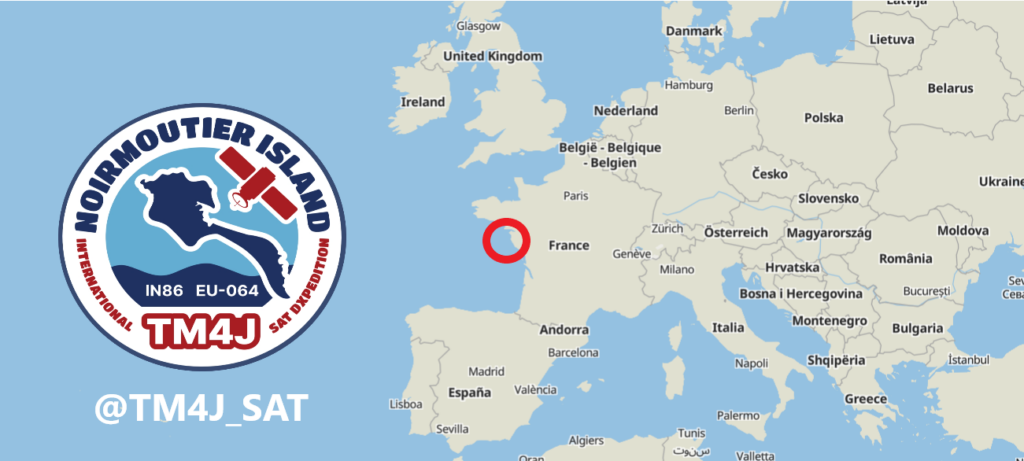
F4DXV Jérôme (@F4DXV) and EA4NF Philippe (@EA4NF_SAT) announce that they will be actívating Noirmoutier island EU-064 IN86 from April 1 to 4, 2024 with the special callsign TM4J
This International DXpedition is the 1st 100% SAT from this French island.
Updates available on @TM4J_SAT
[ANS thanks Ian Parsons, K5ZM, AMSAT Rover Page Manager, for the above information]
Want to fly the colors on your own grid expedition?
Get an AMSAT car flag and other neat stuff from our Zazzle store!
25% of the purchase price of each product goes towards Keeping Amateur Radio in Space
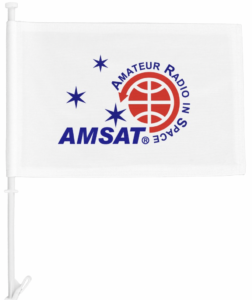
Hamfests, Conventions, Maker Faires, and Other Events
AMSAT Ambassadors provide presentations, demonstrate communicating through amateur satellites, and host information tables at club meetings, hamfests, conventions, maker faires, and other events.
AMSAT Ambassador Clint Bradford, K6LCS, says,
“Think a 75-minute presentation on “working the easy satellites” would be appropriate for your club or event? Let me know by emailing me at k6lcsclint (at) gmail (dot) com or calling me at 909-999-SATS (7287)!”
Clint has NEVER given the exact same show twice: EACH of the 150+ presentations so far has been customized/tailored to their audiences.
Scheduled Events
2024 CubeSat Developer’s Workshop
April 23-25, 2024
San Luis Obispo, CA
https://www.cubesatdw.org/
Dayton Hamvention 2024
Friday May 17th through Sunday May 19th, 2024
Greene County Fairgrounds and Expo Center
120 Fairground Road
Xenia, OH 45385
https://hamvention.org
[ANS thanks Clint Bradford, K6LCS, and AMSAT for the above information]
Satellite Shorts from All Over
+ Shields up! On October 19, 1989, a monstrous X13 class solar flare triggered a geomagnetic storm so strong that auroras lit up the skies worldwide the following day. Had you been flying around the Moon at that time, you would have absorbed a dose that would most likely kill you within a month or so. This is why the Orion spacecraft that is supposed to take humans on a Moon fly-by mission this year has a heavily shielded storm shelter for the crew. But shelters like that aren’t sufficient for a flight to Mars. To obtain protection comparable to what we enjoy on Earth would require hundreds of tons of material, and that’s simply not possible in orbit. The primary alternative—using active shields that deflect charged particles just like the Earth’s magnetic field does—was first proposed in the 1960s. Today, we’re finally close to making it work. Fascinating full article at https://bit.ly/3PANp67 (ANS thanks ARS Technica for the above information.)
+ Not an April Fool’s joke: The U.S. Army has conducted a series of experiments, beginning in 1904 and continuing into the 1970s, on using trees as shortwave antennas. “It would seem that living vegetation may play a more important part in electrical phenomena than has been generally supposed. If, as indicated… in these experiments, the earth surface is already generously provided with efficient antennas which we have but to utilize for communications.” For complete details on how to turn the oak in your yard into a radiator for the 60 meter band, there’s a 55-page scientific paper at https://apps.dtic.mil/sti/tr/
+ I’ve been workin’ on the railroad: Northrop Grumman Corporation was selected this month by DARPA to further develop the concept of building a moon-based railroad network as part of the broader 10-year Lunar Architecture Capability Study. The envisioned lunar railroad network could transport humans, supplies and resources for commercial ventures across the lunar surface. (ANS thanks The Orbital Index for the above information.)
Join AMSAT today at https://launch.amsat.org/
In addition to regular membership, AMSAT offers membership to:
- Societies (a recognized group, clubs or organization).
- Primary and secondary school students are eligible for membership at one-half the standard yearly rate.
- Post-secondary school students enrolled in at least half time status shall be eligible for the student rate for a maximum of 6 post-secondary years in this status.
- Memberships are available for annual and lifetime terms.
Contact info [at] amsat.org for additional membership information.
73 and remember to help Keep Amateur Radio in Space!
This week’s ANS Editor,
Paul Stoetzer, N8HM
n8hm [at] amsat.org
ANS is a service of AMSAT, the Radio Amateur Satellite Corporation, 712 H Street NE, Suite 1653, Washington, DC 20002
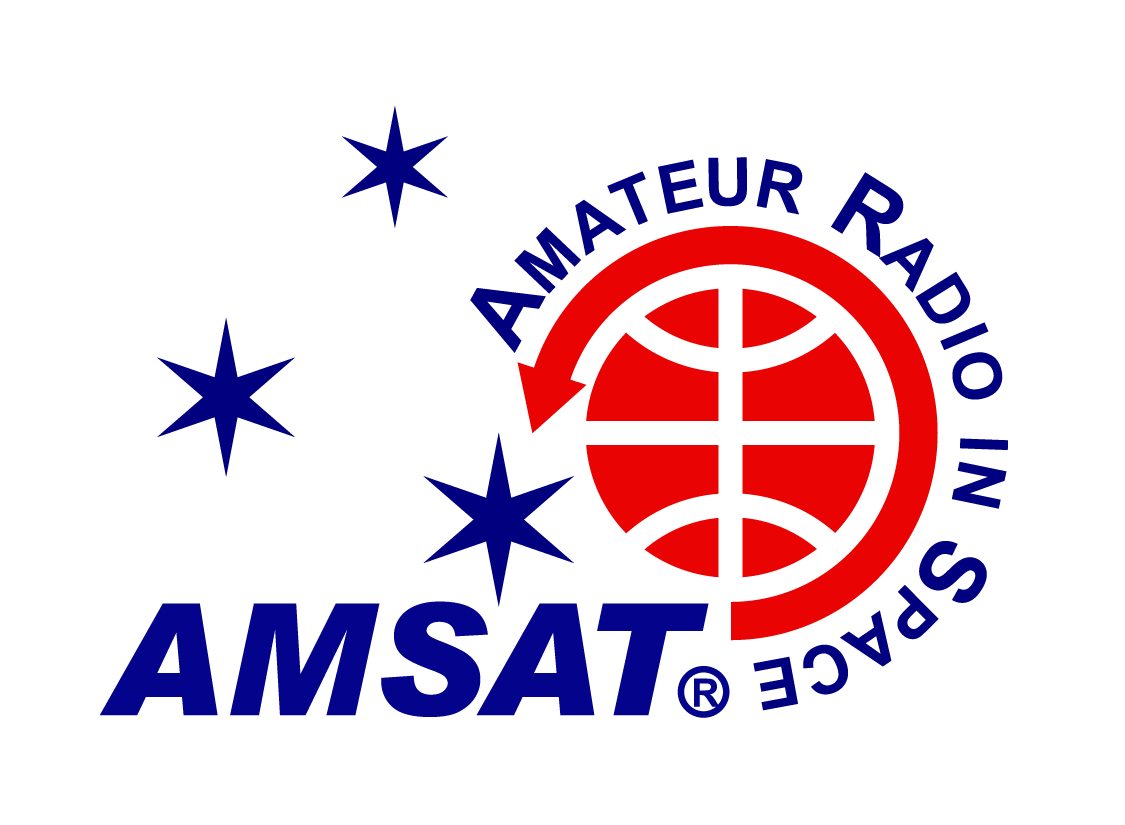
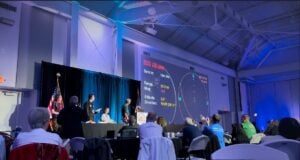
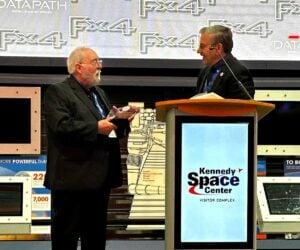
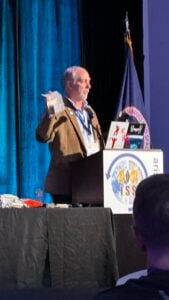
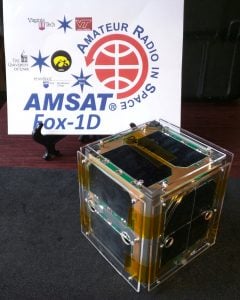
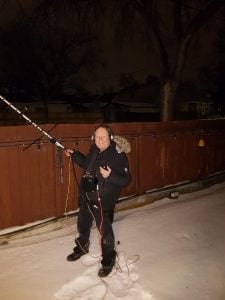
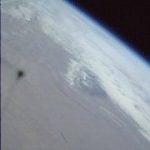 pictures, with the last photos received on September 19, 2020. An archive of all of the photos captured by ground stations can be found at
pictures, with the last photos received on September 19, 2020. An archive of all of the photos captured by ground stations can be found at 